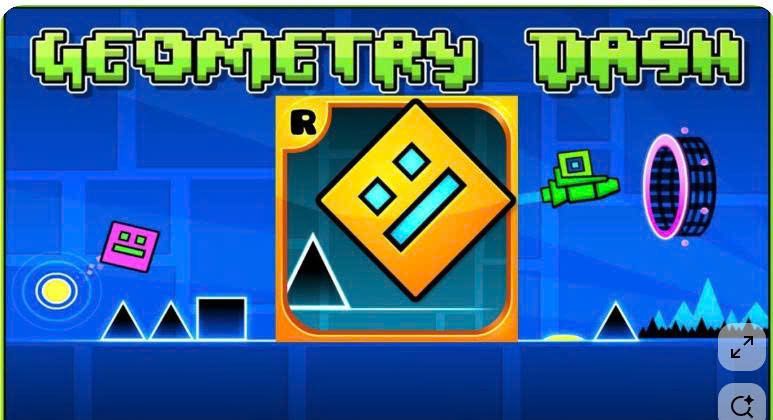If you've ever wondered what it feels like to turn geometric shapes into death-defying acrobats, then you're in for a treat. The world of rhythm-based platformers offers some of the most exhilarating and frustrating gaming experiences you'll ever encounter, and Geometry Dash sits proudly at the top of this mountain of madness.
At its core, the concept seems deceptively simple: guide a small geometric icon through obstacle-filled levels while syncing your movements to an energetic soundtrack. Yet beneath this minimalist exterior lies a game that will test your reflexes, patience, and determination like few others can. Whether you're a complete newcomer or someone looking to improve their geometric jumping skills, this guide will help you navigate the colorful chaos that awaits.
Understanding the Gameplay Mechanics
The beauty of Geometry Dash lies in its elegant simplicity. Your primary interaction with the game involves a single input – typically a tap, click, or spacebar press – that makes your icon jump. However, don't let this fool you into thinking the game lacks depth.
Your geometric avatar automatically moves forward at a constant speed, and your job is to time your jumps perfectly to avoid spikes, navigate through tight spaces, and leap over gaps. The real magic happens when you realize that every level is meticulously designed to sync with its accompanying music. The beat becomes your guide, the rhythm your roadmap to success.
As you progress, you'll encounter different game modes that change how your icon behaves. The ship mode lets you fly freely up and down by holding the input button. The ball mode flips gravity with each tap, creating a bouncing effect. The wave mode offers precise vertical control, while the UFO mode provides short upward boosts. Each mode requires you to adapt your timing and thinking, keeping the gameplay fresh and challenging.
The visual feedback is immediate and satisfying. When you successfully navigate a particularly tricky sequence, the synchronization between your movements, the music, and the visual effects creates an almost euphoric feeling. Conversely, when you crash into an obstacle – and you will, many times – the level instantly resets, allowing you to jump back into the action without delay.
Essential Tips for Geometric Success
Start with the basics and be patient with yourself. The first few official levels serve as an excellent tutorial for understanding the game's rhythm and mechanics. Don't rush to tackle the harder levels until you've mastered the fundamentals. Each crash is a learning opportunity, not a failure.
Listen to the music actively. This cannot be overstated – the soundtrack isn't just background noise; it's your most valuable tool. Most jumps and movements align with the beat or specific musical cues. Train your ear to recognize these patterns, and you'll find yourself naturally timing your inputs more accurately.
Practice the art of muscle memory. Successful players develop an almost automatic response to visual cues. When you see a spike at a certain position on screen, your finger should instinctively know when to tap. This comes only through repetition, so don't get discouraged if it takes hundreds of attempts to complete a level.
Use practice mode strategically. The practice mode allows you to place checkpoints throughout a level, breaking down intimidating challenges into manageable chunks. Master each section individually before attempting the full level. It's like learning a complex song – you practice the difficult passages slowly before playing the entire piece.
Pay attention to visual cues beyond obstacles. The game uses color changes, background elements, and particle effects to telegraph upcoming challenges or mode switches. Experienced players read these signs like a roadmap, preparing for what's coming next.
Take breaks when frustration builds. There's something uniquely maddening about failing at the 95% mark of a level for the twentieth time. When you feel your patience wearing thin, step away. Fresh eyes and relaxed fingers often succeed where stressed-out attempts fail.
The Community and Creative Aspect
One of the most remarkable aspects of Geometry Dash is its thriving creative community. The level editor has spawned millions of user-created levels, ranging from beginner-friendly introductions to mind-bendingly difficult challenges that push the game's mechanics to their absolute limits.
Exploring community levels opens up endless possibilities. You'll find levels that tell stories through their visual design, levels that experiment with new mechanics, and levels that perfectly complement obscure musical tracks you've never heard before. This vast library ensures you'll never run out of new geometric jumping challenges to tackle.
Final Thoughts on the Journey
The path to mastering the geometry jump is paved with countless failures, sudden victories, and moments of pure gaming bliss. What starts as a simple concept – make a square jump over some spikes – evolves into an intricate dance between player, music, and digital geometry.
The satisfaction of finally completing a level that has stumped you for days is unmatched in gaming. That moment when muscle memory, musical intuition, and visual processing align perfectly creates an experience that's both meditative and exhilarating.
Remember, every expert player started exactly where you are now – staring at that first spike, learning to time that first jump. The geometry dash isn't just about reaching the end of a level; it's about enjoying the rhythmic journey, celebrating small improvements, and discovering that sometimes the most profound gaming experiences come in the simplest geometric packages.
So take that leap, embrace the challenge, and prepare to lose yourself in the hypnotic world of geometric jumping. Your cube-shaped avatar is waiting, and the beat is about to drop.

For further actions, you may consider blocking this person and/or reporting abuse


Top comments (0)